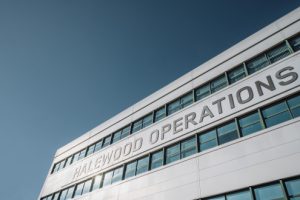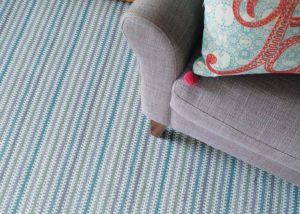My Favourite Building – Atlas Building

MY Favourite Building returns with a look at the Atlas Building, in the Aston area of Birmingham. Marcus Aniol, below, managing director of building services provider JS Wright, talks about its industrial heritage and why it’s been the perfect home for the company for the past six years.
If you would like to take part in ‘My Favourite Building’, please email tamlyn.jones@thebusinessdesk.com.
A FORMER factory may not be everyone’s idea of a favourite building but for me the Atlas Building, at Portland Street in Aston, symbolises all that I admire about Birmingham.
The three-storey, 1860s blue brick building stands like a monument to the city’s industrial heritage yet encompasses all the amenities a modern company requires.
I first imbibed its Victorian charm in 2006 when I climbed the original steel staircase to the refurbished first floor that was to become our new headquarters.
There was a spacious 7,500 sq ft floor area, a 14 ft-high ceiling, decorated cast iron columns and brick walls shot-blasted of their paint from when the floor was used previously as an electric blanket factory.

Indeed when JS Wright was founded in 1890, the Atlas Building was at the heart of what was then known as “the city of a thousand trades”.
It was making a major contribution to the prosperity of Birmingham as a bonded warehouse, regularly filled with manufactured metal ware bound for worldwide markets.
Merchants using the canal system would have had their goods impounded in the building if customs officials along the network had found they had not paid the required amount of export tax.
Security and strength could almost be hallmarked on the Atlas Building, the name of which was probably derived from the Greek god who bore the weight of the world on his shoulders.
Indeed, the brickwork is a staggering 32 inches thick and the columns that hold up the reinforced concrete floors are up to 13 inches in diameter.

All this has resulted in a haven of peace for our engineers who make use of the latest computer aided design technology and IT connections to design mechanical services for the hotel, residential, student accommodation, leisure and commercial sectors.
So well soundproofed is the building, that our people are able to work free from outside noise and undisturbed by any discussions or meetings going on elsewhere in our offices.
The adjoining garden, cultivated during Victorian times for use as a place for workers to relax, has also given way to the approach road to a car park within the ground floor.
Birmingham may have other factory buildings from Victorian times but none of such size, stature and flexibility as the Atlas Building.
Pic: Inside the Atlas Building
Click here to visit our manufacturing channel
Sectors
Comments
If you'd like to leave a comment, please register now for free or login








